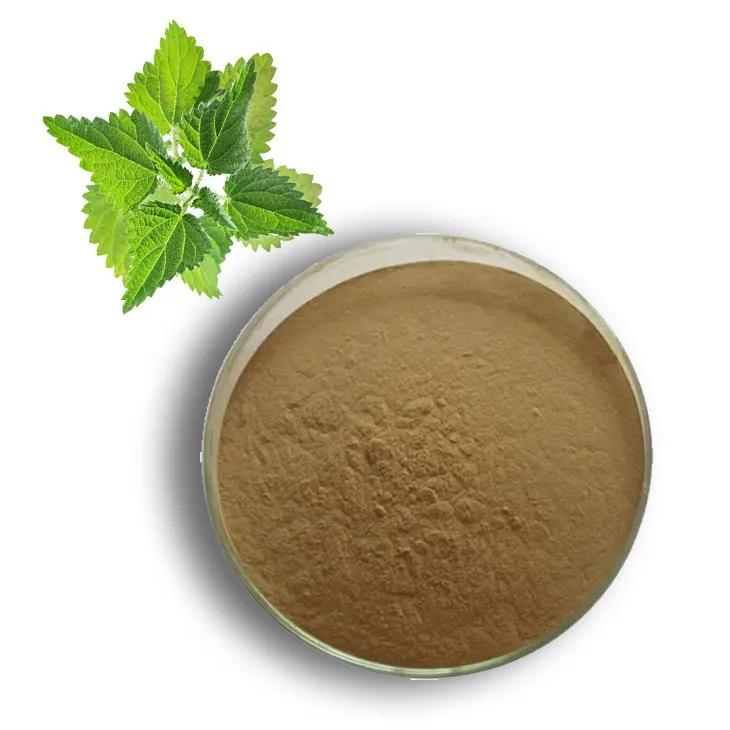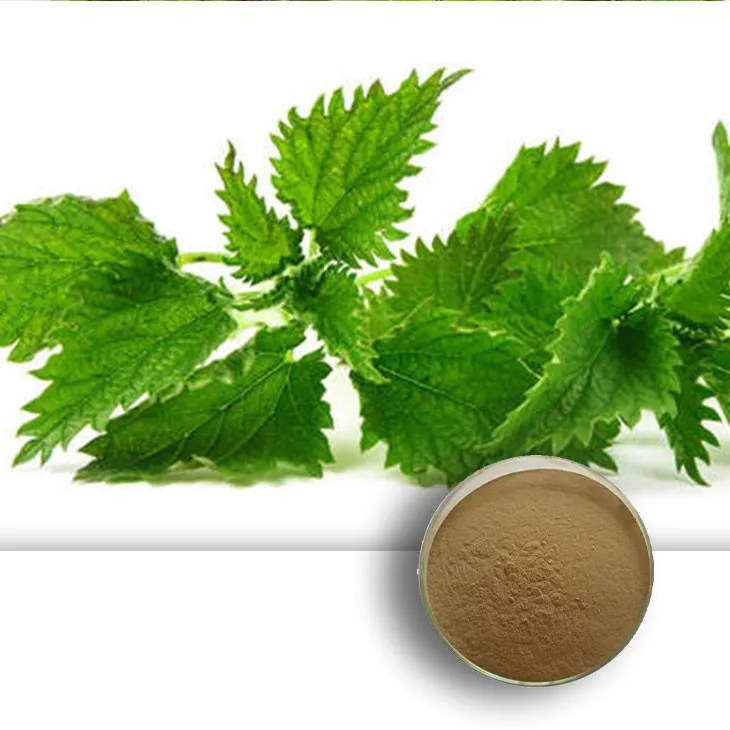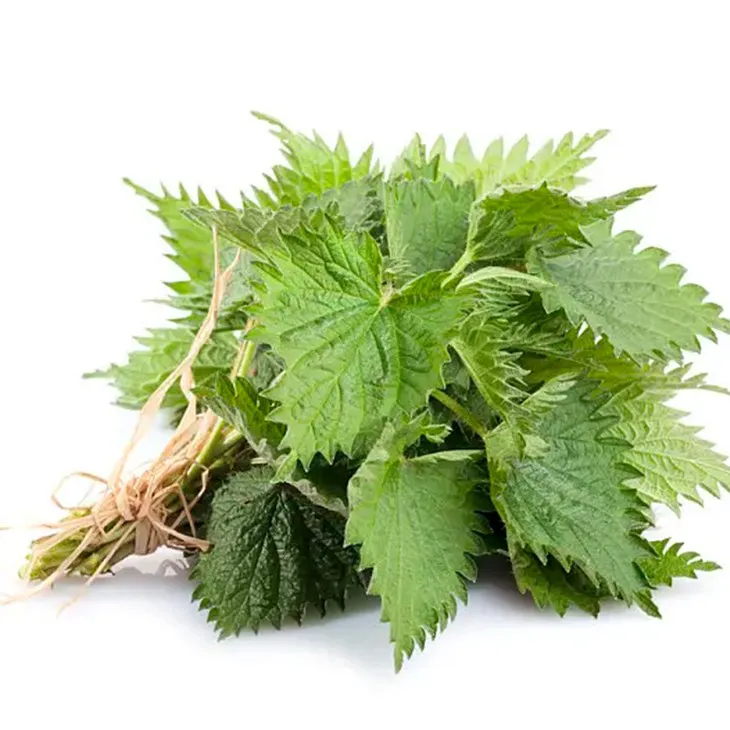- 0086-571-85302990
- sales@greenskybio.com
The Best Sources of Natural Nettle Leaf Extract.
2024-11-27

Introduction
Nettle leaf extract has been steadily gaining momentum in the health and wellness industry. Derived from the nettle plant (Urtica dioica), this extract is rich in a variety of nutrients, including vitamins, minerals, and antioxidants. As the demand for natural remedies and supplements grows, understanding the best sources of Nettle leaf extract becomes crucial. This article will explore the top geographical areas for sourcing nettle leaves, the influence of organic farming on extract quality, and how to identify high - quality Nettle leaf extract.

Geographical Sources of Nettle Leaves
Traditional Sources
Europe has long been a significant source of nettle leaves. Countries such as Germany, France, and Italy have a rich history of using nettle in traditional medicine. The temperate climate in much of Europe provides ideal conditions for the growth of nettle plants. In these regions, nettles can often be found growing wild in meadows, forests, and along riverbanks. The traditional knowledge passed down through generations has also led to the careful harvesting and processing of nettle leaves for various medicinal and culinary uses.
In Germany, for example, nettle has been used in herbal remedies for treating ailments such as arthritis and allergies. The local flora is carefully monitored, and regulations ensure sustainable harvesting. This means that the nettle leaf extract sourced from Germany is likely to be of high quality, as it adheres to strict environmental and quality control standards.
Emerging Sources
North America is emerging as a significant source of nettle leaves. In particular, areas in the United States such as the Pacific Northwest and parts of the Northeast have a climate conducive to nettle growth. The wild nettles in these regions are abundant, and there is a growing interest in commercializing nettle leaf extract. Additionally, Canada has large areas of suitable wilderness where nettle plants thrive.
In Asia, China and India are also becoming important players in nettle leaf production. In China, the vast and diverse geographical regions allow for different varieties of nettle to be cultivated. The traditional Chinese medicine system has also recognized the value of nettle for centuries, which has led to an increase in organized cultivation and extraction processes. In India, with its rich biodiversity, nettles are found in many parts of the country, and local communities are starting to explore the commercial potential of nettle leaf extract.

The Impact of Organic Farming on Nettle Leaf Extract Quality
Organic farming has a profound impact on the quality of nettle leaf extract. When nettles are grown organically, they are not exposed to synthetic pesticides and fertilizers. This absence of chemicals is crucial as it ensures that the final extract is free from harmful contaminants.
Purity of the Extract
Organic nettle farming promotes the growth of pure nettle plants. Without the interference of chemical pesticides, the nettles can develop their natural defenses and produce a more pure and unadulterated form of leaves. When these leaves are used to produce the extract, the resulting product is likely to have a higher purity level. For example, in a study comparing organic and conventionally - grown nettles, the organic nettle leaf extract was found to have fewer impurities and a more consistent chemical profile.
Concentration of Nutrients
Organic farming methods can also enhance the concentration of nutrients in nettle leaves. Organic soils are typically rich in organic matter, which provides a more favorable environment for the nettle plants to absorb nutrients from the soil. This can lead to a higher concentration of vitamins, minerals, and antioxidants in the leaves. Consequently, the nettle leaf extract obtained from organically - grown nettles may have a more potent nutritional profile. For instance, organically - grown nettles have been shown to have higher levels of vitamin C and iron compared to their conventionally - grown counterparts.
Absence of Contaminants
As mentioned earlier, one of the main advantages of organic nettle farming is the absence of synthetic pesticides and fertilizers. These chemicals can leave residues in the nettle leaves, which can then find their way into the extract. By avoiding the use of such chemicals, organic farming ensures that the nettle leaf extract is free from pesticide and fertilizer contaminants. This is especially important for consumers who are using nettle leaf extract for its health - promoting properties, as they can be assured that they are not ingesting any harmful substances along with the beneficial components of the extract.

Identifying High - Quality Nettle Leaf Extract
Purity
Purity is a key factor in determining the quality of nettle leaf extract. A high - quality extract should be free from other plant materials, chemicals, and impurities. One way to assess purity is through laboratory analysis. Manufacturers should be able to provide certificates of analysis that show the composition of the extract. Additionally, a pure nettle leaf extract should have a characteristic color, smell, and taste. For example, it should have a greenish - brown color, a slightly earthy smell, and a bitter - herbal taste. If the extract has an unusual color, smell, or taste, it may be a sign of contamination or low - quality processing.
Concentration
The concentration of active ingredients in the nettle leaf extract is also important. Different products may have different concentrations, depending on the extraction method and intended use. For example, if the extract is intended for medicinal purposes, a higher concentration of active ingredients such as flavonoids and phenolic acids may be desirable. Consumers should look for products that clearly state the concentration of key ingredients on the label. However, it is also important to note that a higher concentration does not always mean better quality. The concentration should be appropriate for the intended use, and the product should be formulated in a way that ensures the stability and bioavailability of the active ingredients.
Absence of Contaminants from Source Plants
As discussed earlier, the source plants should be free from contaminants such as pesticides, heavy metals, and other harmful substances. To ensure this, it is important to source the nettle leaf extract from reliable suppliers who follow strict quality control measures. This may include testing the source plants for contaminants before harvesting, as well as implementing proper post - harvest handling and processing procedures. Consumers can also look for organic certifications on the product label, which indicate that the nettle leaves were grown organically and are less likely to be contaminated with synthetic chemicals.
Conclusion
In conclusion, the best sources of natural nettle leaf extract are influenced by a variety of factors. Geographical areas with a long history of nettle cultivation and a suitable climate, such as parts of Europe, are reliable traditional sources. However, emerging areas like North America, China, and India are also increasing their production. Organic farming plays a vital role in ensuring the quality of the extract by promoting purity, enhancing nutrient concentration, and eliminating contaminants. When identifying high - quality nettle leaf extract, consumers should consider factors such as purity, concentration, and the absence of contaminants from the source plants. By being informed about these aspects, consumers can make better choices when selecting nettle leaf extract products for their health and wellness needs.
FAQ:
What are the traditional geographical locations for sourcing nettle leaves?
Traditionally, nettle leaves are sourced from Europe, especially regions like the United Kingdom, France, and Germany. These areas have a long history of using nettle in traditional medicine and cuisine. Nettle grows abundantly in the wild in these regions, and the climate and soil conditions are favorable for its growth. Additionally, in some parts of Asia, such as the Himalayan regions, nettle has also been a traditional source. The local people have been using nettle for various purposes for centuries.
What are the emerging areas for nettle leaf sourcing?
Some emerging areas for nettle leaf sourcing include parts of North America, such as the Pacific Northwest in the United States. The climate in this region, with its mild, wet winters and warm, dry summers, is suitable for nettle growth. In South America, certain areas in Chile are also emerging as potential sources. The local environment in these emerging areas provides new opportunities for large - scale nettle cultivation and extraction.
How does organic farming impact the quality of nettle leaf extract?
Organic farming has a significant positive impact on the quality of nettle leaf extract. Firstly, without the use of synthetic pesticides and fertilizers, the nettle plants are less likely to be contaminated with harmful chemicals. This results in a purer extract. Organic farming also promotes the growth of healthier plants as it focuses on natural soil fertility and ecological balance. The nettle leaves grown organically may have a higher concentration of beneficial compounds, such as vitamins, minerals, and antioxidants, which in turn leads to a higher - quality extract.
What factors should be considered to identify high - quality nettle leaf extract?
When identifying high - quality nettle leaf extract, several factors should be considered. Purity is crucial; it should be free from other unwanted plant materials or contaminants. Concentration is another factor; a higher concentration of the active compounds in nettle, such as flavonoids and phenolic acids, indicates better quality. The absence of contaminants from the source plants, including heavy metals and pesticides, is also essential. Additionally, the extraction method used can affect the quality. For example, a gentle extraction method that preserves the integrity of the beneficial compounds is preferable.
Can nettle leaf extract from different sources vary in its effectiveness?
Yes, nettle leaf extract from different sources can vary in its effectiveness. The geographical location of the source can influence the nutrient content of the nettle leaves due to differences in soil composition, climate, and sunlight exposure. For example, nettle leaves grown in nutrient - rich soil may have a higher content of certain minerals. Also, the farming practices, whether organic or conventional, can affect the presence of beneficial compounds. If the source plants are contaminated, it can reduce the effectiveness of the extract. Therefore, it is important to choose a reliable source for nettle leaf extract.
Related literature
- The Benefits of Nettle Leaf Extract in Health and Wellness"
- "Organic Farming and the Quality of Botanical Extracts: A Case Study of Nettle"
- "Geographical Variation in Nettle Composition and its Impact on Extract Quality"
- ▶ Hesperidin
- ▶ citrus bioflavonoids
- ▶ plant extract
- ▶ lycopene
- ▶ Diosmin
- ▶ Grape seed extract
- ▶ Sea buckthorn Juice Powder
- ▶ Beetroot powder
- ▶ Hops Extract
- ▶ Artichoke Extract
- ▶ Reishi mushroom extract
- ▶ Astaxanthin
- ▶ Green Tea Extract
- ▶ Curcumin Extract
- ▶ Horse Chestnut Extract
- ▶ Other Problems
- ▶ Boswellia Serrata Extract
- ▶ Resveratrol Extract
- ▶ Marigold Extract
- ▶ Grape Leaf Extract
- ▶ blog3
- ▶ blog4
-
Suppliers of Organic β - Carotene Powder.
2024-11-27
-
100% Pure Organic Black Garlic Extract.
2024-11-27
-
The best - quality astaxanthin.
2024-11-27
-
Active components in bayberry extracts.
2024-11-27
-
Nettle leaf extract
2024-11-27
-
melatonin extract
2024-11-27
-
Alfalfa Meal
2024-11-27
-
Centella Asiatica Extract
2024-11-27
-
Konjac Powder
2024-11-27
-
Lycopene
2024-11-27
-
Carrageenan Extract Powder
2024-11-27
-
Scutellaria Extract
2024-11-27
-
Lemon Extract
2024-11-27
-
Andrographis Paniculata Extract Powder
2024-11-27




















